The Brain: Mapping the Human Mind’s Complex Landscape
Introduction
The human brain represents one of the most intricate and least understood organs in the body. Weighing about three pounds, it controls thoughts, emotions, and actions while remaining an enigma in many ways. In this comprehensive exploration, we will delve into the various aspects of the brain, aiming to paint a detailed picture of its structure and functions while integrating findings from neuroscience and psychology. The aim is to demystify the complexity of the human mind and its intricate landscapes, paving the way for better understanding and further research.
The Structure of the Brain
The brain is comprised of several key structures that work intricately together to produce thoughts, actions, and emotions. These structures can be broadly categorized into three main areas: the hindbrain, midbrain, and forebrain.
Hindbrain
Cerebellum: The cerebellum is located at the back of the brain and is crucial for motor control, coordination, and balance. It processes sensory information and regulates movements, allowing for smooth, coordinated actions.
Pons: The pons is situated above the medulla and connects various parts of the brain. It plays a significant role in sleep, respiration, swallowing, and facial expressions.
Medulla Oblongata: Located just above the spinal cord, the medulla controls autonomic functions such as heart rate, blood pressure, and breathing.
Midbrain
The midbrain serves as a crucial relay station for visual and auditory information. It is also involved in motor control and maintaining alertness. The tectum and tegmentum are key components. The tectum is involved in reflexive movements toward visual and auditory stimuli, while the tegmentum plays a role in arousal and motor functions.
Forebrain
The forebrain is the most complex and is a center for higher cognitive functions. It consists of several important structures:
-
Cerebral Cortex: The cerebral cortex is the outer layer of the brain and is responsible for high-order functions such as reasoning, language, and decision-making. It is divided into four lobes: frontal, parietal, temporal, and occipital.
-
Basal Ganglia: These structures are vital for the control of movement and coordination. They regulate the initiation and cessation of voluntary movements.
-
Limbic System: This system plays a critical role in emotions, memories, and arousal. Key components include the amygdala, hippocampus, and hypothalamus.
The Complexity of Brain Activity
The brain operates using an intricate network of neural connections. With approximately 86 billion neurons and trillions of synapses, the brain’s ability to process and store information is truly astounding.
Neurons and Synapses
Neurons are the fundamental building blocks of the brain. They communicate through synapses, where neurotransmitters are released, allowing for the transmission of signals. The plasticity of synaptic connections is essential for learning and memory.
Brain Waves
Brain activity can be measured through various types of brain waves, which are classified into five categories based on frequency:
-
Delta Waves (0.5-4 Hz): These are the slowest brain waves and are correlated with deep sleep.
-
Theta Waves (4-8 Hz): Associated with light sleep, creativity, and relaxation.
-
Alpha Waves (8-12 Hz): Present during periods of calmness and relaxation, often seen in mediation.
-
Beta Waves (12-30 Hz): Associated with active, alert thinking and problem-solving.
-
Gamma Waves (30 Hz and above): Linked to high-level information processing and cognitive functioning.
Understanding these various brain wave patterns helps scientists and medical professionals diagnose and treat conditions ranging from sleep disorders to epilepsy.
Brain Mapping Techniques
Brain mapping refers to the various methods used to study the structure and function of the brain.
Structural Imaging
Magnetic Resonance Imaging (MRI): MRI uses strong magnetic fields and radio waves to produce detailed images of the brain’s structure. This technique is invaluable for identifying tumors, injuries, and other abnormalities.
Computed Tomography (CT) Scan: A CT scan combines multiple X-ray images to create cross-sectional views of the brain. It is quicker than an MRI but less detailed.
Functional Imaging
Functional MRI (fMRI): This technique measures brain activity by detecting changes in blood flow. It is often used in research to correlate specific brain regions with particular functions or tasks.
Positron Emission Tomography (PET) Scan: A PET scan utilizes radioactive tracers to visualize metabolic processes in the brain. It can illustrate areas of high and low activity, providing insights into conditions like Alzheimer’s and other neurodegenerative diseases.
Electrophysiological Techniques
Electroencephalography (EEG): EEG measures electrical activity in the brain using electrodes placed on the scalp. It is useful for diagnosing epilepsy and sleep disorders.
Magnetoencephalography (MEG): This method detects the magnetic fields produced by neuronal activity, offering insights into brain function in real time.
Cognitive Functions and Brain Regions
Different brain regions are responsible for specific cognitive functions. Understanding these functions helps elucidate the complexity of the human mind.
Memory
The hippocampus, part of the limbic system, plays a crucial role in forming new memories and connecting emotions to those memories. Short-term and long-term memory storage involves various brain areas, including the prefrontal cortex, which is responsible for decision-making and problem-solving.
Emotion
The amygdala is central to emotional processing, especially in fear responses and emotional learning. It interacts closely with other brain regions, which allows for a nuanced understanding of emotional experience.
Language
Language processing predominantly centers in the left hemisphere, specifically in Broca’s area (linked to speech production) and Wernicke’s area (related to language comprehension). Damage to these areas can lead to specific language impairments known as aphasia.
Decision-Making
Creating a neural map of decision-making involves various regions, including the prefrontal cortex, basal ganglia, and insula. These areas work together to evaluate options, consider consequences, and guide choices.
Mapping Emotions and Their Impact on the Brain
Emotions significantly influence brain activity and subsequent decision-making processes. Understanding how emotions interact with cognitive functions can offer insights into mental health.
The Amygdala’s Role
The amygdala is essential in processing emotions, particularly fear and anxiety. When faced with a stressor, the amygdala triggers the body’s fight-or-flight response, preparing us to react.
The Connection Between Emotion and Memory
Emotional events are often remembered more vividly than neutral events. The hippocampus works alongside the amygdala to store these emotionally charged memories. This interplay prepares individuals for similar experiences in the future.
Stress and the Brain
Chronic stress can have detrimental effects on the brain, leading to conditions such as depression and anxiety disorders. Understanding how stress impacts brain function can help inform effective treatments.
Brain Disorders: Mapping the Uncharted Territories
Brain disorders range from neurodegenerative diseases to developmental disabilities, each presenting unique challenges and requiring extensive research to understand and manage.
Neurodegenerative Diseases
Alzheimer’s Disease: Characterized by plaque buildup and neurofibrillary tangles, Alzheimer’s significantly impacts memory and cognition. Brain mapping techniques help identify changes in brain structure and function associated with disease progression.
Parkinson’s Disease: This disorder affects movement and is characterized by the death of dopamine-producing neurons in the basal ganglia. Studies focus on understanding the underlying mechanisms and potential treatments.
Psychiatric Disorders
Conditions such as schizophrenia, bipolar disorder, and major depressive disorder are often associated with structural and functional abnormalities in the brain. Understanding these differences helps develop targeted treatments.
Developmental Disorders
Autism Spectrum Disorder (ASD) and Attention-Deficit/Hyperactivity Disorder (ADHD) illustrate how variations in brain structure and function can lead to unique cognitive and behavioral profiles. Research into these conditions continues to evolve.
The Future of Brain Mapping and Neuroscience
Advancements in technology and neuroscience are paving the way toward a more comprehensive understanding of the brain.
The Human Connectome Project
This ambitious project aims to create a detailed map of the brain’s neural connections, known as the connectome. Understanding the brain’s wiring will improve insights into how regions interact and how various cognitive functions arise.
Artificial Intelligence and Machine Learning
AI and machine learning techniques are increasingly being used to analyze complex data sets from brain imaging studies. These technologies hold potential for identifying patterns that may have previously gone unnoticed.
Ethical Considerations
As neuroscience continues to evolve, ethical concerns surrounding brain mapping and interventions will grow. Issues related to privacy, consent, and potential misuse of information must be addressed.
Conclusion
The human brain is a marvel of complexity, rich in emotions, thoughts, and memories. Through structural and functional mapping techniques, we continue to unlock its secrets, shedding light on the intricate landscape of the human mind. Understanding the brain not only enhances our grasp of human behavior but also opens doors to innovative treatments for various brain disorders. As research progresses, the implications of these findings will inform not only neuroscience but also psychology, education, and mental health care. The journey of understanding the brain is far from over, and with each discovery, we move closer to mapping the full extent of our mental landscape.

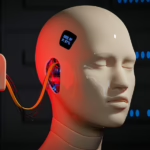

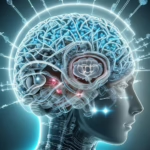













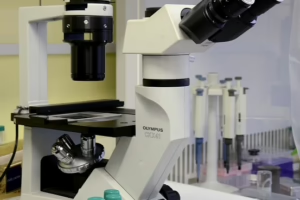

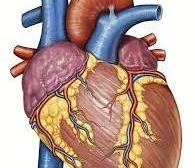
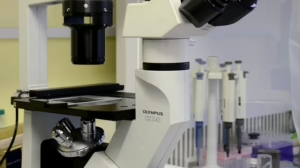





Add Comment